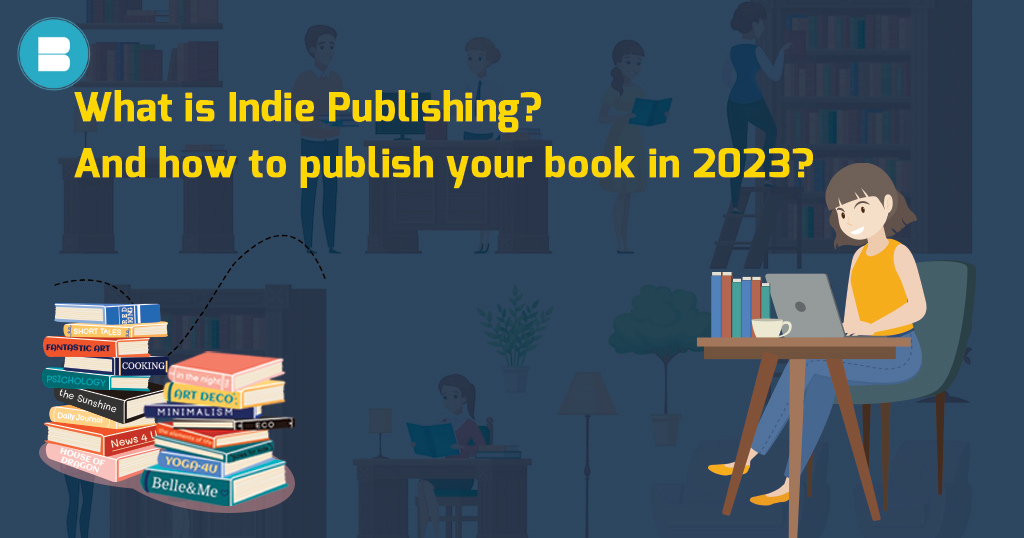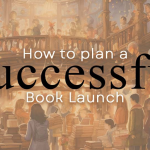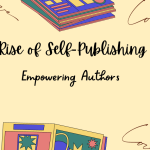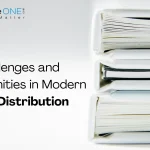In recent years, the publishing scene has seen a dramatic upheaval. The advent of digital platforms, as well as the democratisation of the publishing process, has given rise to a movement known as “indie publishing.” If you want to share your writings with the world as an aspiring author, indie publishing may be the way to go. In this complete tutorial, we’ll look at what indie publishing comprises and how to get started on this fascinating adventure.
Understanding Indie Publishing
What Does Indie Mean in Publishing?
In the field of publishing, the term “indie” is an abbreviation for “independent,” and its importance is profound in the context of creative expression and dissemination. When it comes to publishing, the term “indie” refers to authors who choose to work outside of the established publishing firms.
These writers have chosen to have complete control over their creative material, production, and distribution procedures. This decision allows them to preserve creative control while also fostering a direct connection with their public, free of the typical intermediaries inherent in the publishing industry.
Read: Learn How to Write & Publish an Autobiography in 2023.
Authors who use an indie approach enjoy a sense of agency over their writing fates. They handle the complexities of the publishing scene on their own, making judgements on issues like editing, cover design, formatting, and marketing. This route allows authors to alter their work.
The Difference Between Indie Publishing and Self-Publishing
While the terms “indie publishing” and “self-publishing” are sometimes used interchangeably, each attitude in the realm of book production is different. Indie publishing promotes the ethos of self-creation and dissemination. It represents not just the act of publishing but also a larger attitude of accepting one’s identity as a creative entrepreneur. This is more than simply the mechanics of publishing; it is a proclamation of independence, a declaration of creating one’s own path.
Self-publishing, on the other hand, involves writers personally supervising the whole publication process, from text creation to final distribution procedures. It covers the practical procedures needed to bring a book to life without the assistance of a typical publishing firm. Indie publishing and self-publishing are complementary in this regard.
Embarking on Your Indie Publishing Journey
- Writing and Preparing Your Manuscript
It is critical to put time and effort into the quality of your book before embarking on your indie publishing adventure. The stages of polishing, editing, and correct formatting are critical. Quality is critical to the success of your book since it directly influences readers’ impressions and involvement. A well-crafted document not only represents your dedication to your job, but it also builds credibility, drawing and maintaining the interest of readers. - Choosing the Right Platform
Numerous sites provide indie authors with a digital platform to display their literary works. It’s critical to conduct research and choose a platform that aligns with your goals, target audience, and distribution preferences. Popular solutions such as Amazon Kindle Direct Publishing (KDP), Smashwords, and Draft2Digital provide a wide range of tools and reach to meet a variety of publication demands. The platform you select should be compatible with your genre, goals, and marketing techniques, ensuring that your book reaches its target audience. - Formatting and cover design
Professional formatting and cover design are important investments for indie authors. A visually appealing cover and a well-structured inside layout are critical to attracting the attention of readers and creating trust. A professionally designed cover gives readers an early insight into the spirit of your book, while appropriate formatting improves the reading experience. By emphasising these elements, you increase the marketability of your book and help it stand out in a sea of competitors. - Distribution and pricing
It is critical to decide where your book will be accessible, whether in digital, print, or both formats. The distribution methods you choose have a big influence on the accessibility of your book to readers. Setting the correct price plan is also critical. To find a good pricing point, research your genre, evaluate competitors, book length, and the perceived worth of your work. Pricing flexibility may be a powerful tool for attracting readers, particularly during promotional campaigns or sales events. By precisely arranging distribution and pricing, you maximise your book’s market reach and potential.
Challenges and Benefits of Indie Publishing
Can You Make Money in Indie Publishing?
While indie publishing offers the potential to earn royalties from book sales, success is not guaranteed. Marketing, audience engagement, and strategic pricing play significant roles in generating revenue. Authors who invest time in building their brand, promoting their work, and connecting with readers are more likely to see financial returns.
Is it Better to Self-Publish or Use a Publishing Company?
The choice between self-publishing and using a publishing company depends on your goals and preferences. Self-publishing offers creative control, faster publication timelines, and higher royalty rates. Publishing companies provide editorial support, distribution networks, and assistance with marketing. Assess your priorities and make a decision that aligns with your vision for your book.
Is Indie Publishing worth it?
Indie publishing empowers authors to bring their stories to the world on their terms. It allows for creative freedom, direct engagement with readers, and the potential for financial rewards. However, it requires a significant investment of time, effort, and sometimes money. Success in indie publishing depends on a combination of quality content, effective marketing, and a willingness to adapt and learn.
Read: Here’s a Complete Guide on How to Self Publish a Book in 2023.
Indie publishing is a dynamic and ever-changing industry that provides authors with unparalleled opportunities to convey their perspectives. As you begin your indie publishing adventure in 2024, keep in mind that success is the product of hard work, determination, and a desire to always improve your art.
You can bring your stories to life and connect with people all over the world by leveraging the power of digital platforms and taking control of your publishing destiny. Whether you’re a seasoned author or a first-time author, indie publishing provides an intriguing new avenue to explore in the world of writing.
















